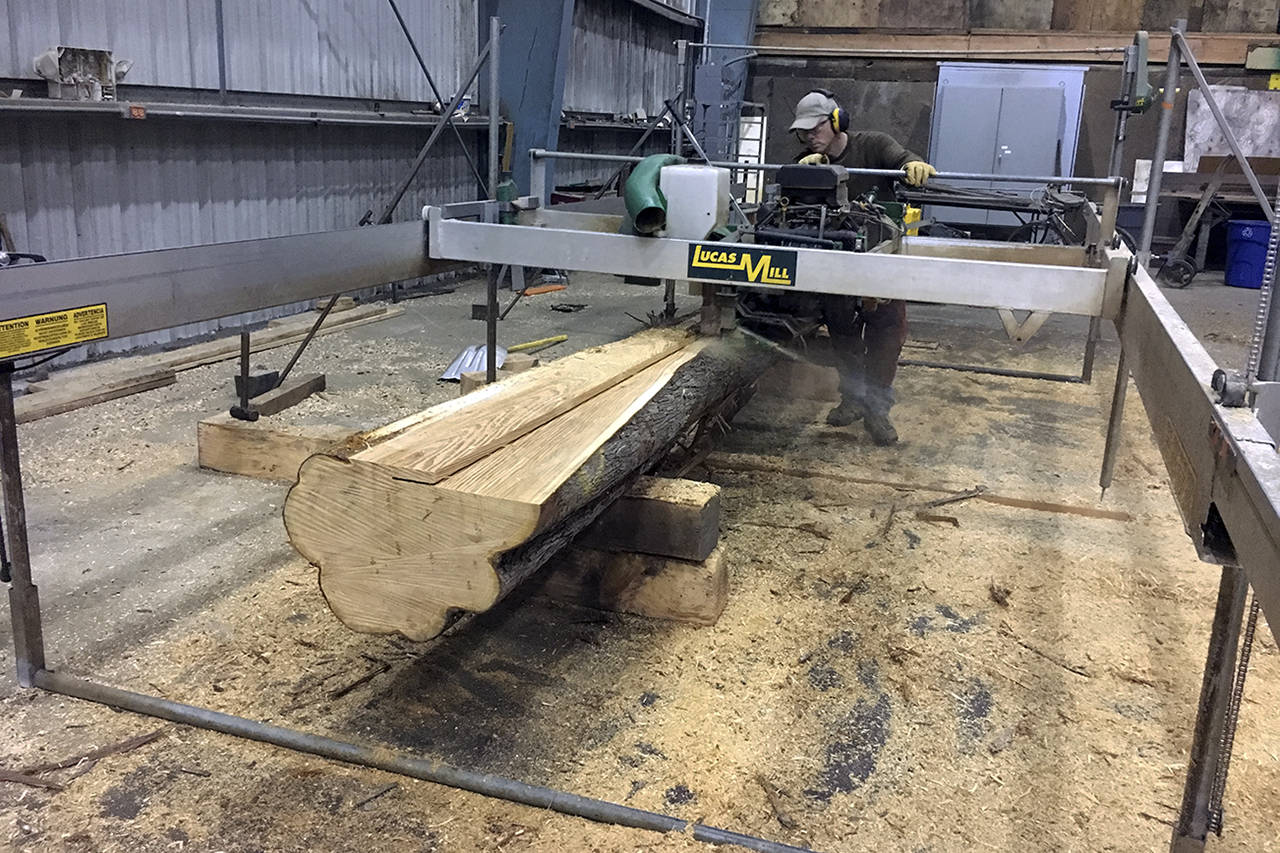Many Harborites know the Moclips-by-the-Sea Historical Society is in the process of building a new structure to expand the Museum of the North Beach.
What they might not know is that they’re getting some hands-on help from Hoquiam’s Polson Museum.
The North Beach group has planned for a long time to house its expanded museum inside a re-creation of the historical Moclips train depot. (That facility served as the western terminus for the Northern Pacific Railway from 1905 until it was torn down in the 1950s.)
The original depot sat on what is now state park land, where the society could not build; so a parcel of nearly an acre was donated by the Ocean Crest Resort a few years ago for the project. It’s on State Route 109, between the resort’s Rec Center and the Chapel by the Sea.
During an early summer meeting of the Harbor’s museum directors, Polson director John Larson says, he perked right up when Moclips director Kelly Calhoun talked about beginning the site-preparation process.
“I said: You got any logs that are worth sawing?” says Larson. “If you can get your logs to the seaport, we’ll do it for free, and then you guys can do what you want with it.”
As it happens, the Polson and the Grays Harbor Historical Seaport had jointly purchased a Lucas Mill circular swing-blade portable sawmill in 2008. The Polson needed it to cut lumber for construction of the Railroad Camp shop next to the museum; the seaport needed it for its spar shop.
“It was the perfect partnership,” says Larson.
And now, a third historical group is benefiting from that purchase.
“This past summer, John came to the site, surveyed the property and selected 13 trees” to be milled, says Kelly Calhoun, director of the Museum of the North Beach.
“They only had a couple of cedars. Most of it was hemlock, and then they had this one spruce that was 147 years old,” Larson says. “It’s tight-grain, beautiful stuff — aircraft grade, some of it.”
Larson and a small crew of volunteers spent a few days the week of Nov. 26 cutting boards. Those stacks of lumber will remain there for 6 to 10 months to air-dry, then will be sent back to Moclips to be incorporated into the museum structure.
Lee Marriott, president of the Historical Society, says that timber will be used in the depot’s entryway and the ticket office area, and as molding strips around doors and windows throughout.
“We really consider it to be an honor to have John Larson and the Polson Museum and their volunteers to be as supportive as they have,” he says. “The Polson is very highly regarded, and to have their support means the world to us.”
Funding still needed
The depot project has been a long time coming, but still has a long way to go. The construction timeline is dependent on donations, according to Marriott.
They need more than $500,000 to start actual construction, he says. Site preparation has cost about $50,000 this year, and there’s about $88,000 in the fund as of this week.
The society’s members are supporting the work as they can along the way, he says. But at this point, they are seeking corporate sponsors because the grants available for such work aren’t enough.
“The goal right now is to get the site developed to the point that we can have some fundraisers on it — bring people onto the property, show them how far we’ve come and what we’re working on,” he says. “We have a long year ahead of us.”


